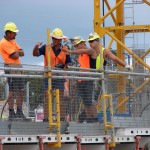Scope of Work – Impacts
This McLaughlin and McLaughlin (M&M) Project Professionals post is the eighth in a Subject Series Construction Claims and Disputes.
Recent posts (Parts 6, 7) address scope of work within the overall subject of Construction Claims and Disputes. Claims and disputes regarding scope of work are a widespread problem and represent the most common issue. Perhaps 75 to 90% of all engineering and construction claims and disputes involve contract scope of work. However, this is not confined to engineering and construction.
Direct compensation for a scope of work change may merely be the proverbial “tip of the iceberg.” What about the rest of the story? Is the contractor missing many other costs or schedule impacts? Often, this is the case. This issue may be broader that an added piece of equipment, redesign to avoid a conflict or similar events.
Scope of work disputes are building blocks to other claim elements in the dispute.
- Delay – Changes can add work to the project critical path. If so, this would cause the forecasted project completion date to be extended (potentially later than planned).
- Progress – Changed work adds to the overall project work content, thereby changing the progress measurement and reporting (Earned Value).
- Disruption / Productivity – Changed work impacts field labor productivity, a major risk to contractors.
- Overheads / Indirects – Changed work may add requirements for additional construction support, supervision, insurance and other indirects.
- Terms and Conditions – The cost of bonding, insurance, warranties, guarantees, and many others can be impacted by changed work.
- Profit / Fee – proper compensation in this area can be challenging.
The majority of the discussion will address entitlement to recovery (rather than pricing or quantum). For pricing (or quantum), please see McLaughlin & McLaughlin’s Project Professionals Construction Claims and Disputes Part 4 and Part 5. [Read more…]






